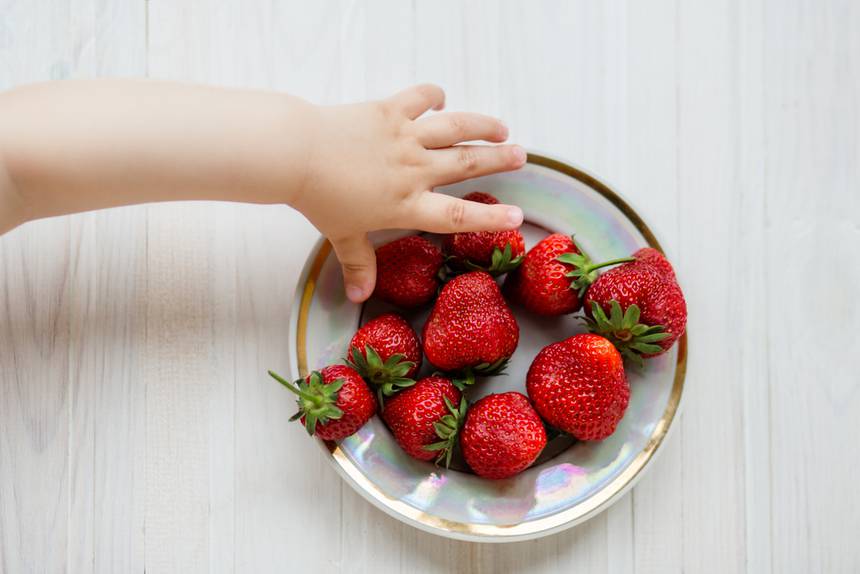And the top 15 that are least toxic.
Humans are strange animals. We seem to be skipping some of the crucial survival stuff by making decisions that imperil our species’ longevity. Like, what other animal willingly destroys its own habitat? Granted, climate change is apparently too abstract to spark urgency in everyone. But how about this: What other animal would knowingly eat poison? It sounds preposterous, yet here we are, dousing our healthiest food – the plants – with hundreds of pesticides, many of which are classified as a possible human carcinogens or are linked to other horrid health effects. What would Darwin think?
Thankfully, however, we have choices and can continue to eat plentiful fruits and vegetables, which are crucial for good health. We have growers opting not to use toxic pesticides on their crops, and we also have organizations like the Environmental Working Group (EWG) diving into the science to empower people to live healthier lives.
Every year, EWG issues the Dirty Dozen list as part of their Shopper’s Guide to Pesticides in Produce. In the report, they analyze United States Department of Agriculture (USDA) test data to identify which fruits and vegetables are most contaminated with pesticide residues. They also release the Clean Fifteen, a list of the fruits and vegetables with the lowest amount of residues.
The USDA found a total of 225 different pesticides and pesticide breakdown products on the 47 fruits and vegetables they tested. Nearly 70 percent of the conventionally grown produce sold in the country was found to contain pesticide residues. And consider this: All produce was washed thoroughly and peeled when applicable, showing that pesticides don’t just sit on the surface and then get washed away.
Here are the Dirty Dozen for 2019 – buy organic when you can:
1. Strawberries
2. Spinach
3. Kale
4. Nectarines
5. Apples
6. Grapes
7. Peaches
8. Cherries
9. Pears
10. Tomatoes
11. Celery
12. Potatoes
“The main route of pesticide exposure for most Americans who do not live or work on or near farms is through their diet,” said EWG Research Analyst Carla Burns.
And if it’s bad for regular adults, it is even worse for expectant mothers and children.
As EWG points out, the American Academy of Pediatricians Council on Environmental Health urges that children’s exposure to pesticides should be as minimal as possible. Being exposed to pesticide during pregnancy and early childhood, the Academy says, boosts the risk of brain tumors, leukemia, neurodevelopmental defects and other adverse birth outcomes.
“Even low levels of pesticide exposure can be harmful to children,” says famed pediatrician and epidemiologist, Dr. Philip Landrigan. “When possible, parents and caregivers should take steps to lower children’s exposures to pesticides while still feeding them diets rich in healthy fruits and vegetables.”
On the other hand, however, we have the Clean 15. These are the fruits and vegetables with the least amount of pesticide residue. Of these, more than 70 percent of samples had no pesticide residues.
These are the Clean Fifteen for 2019 – conventional is OK if you can’t buy organic:
1. Avocados
2. Sweet corn
3. Pineapples
4. Frozen sweet peas
5. Onions
6. Papayas
7. Eggplants
8. Asparagus
9. Kiwis
10. Cabbages
11. Cauliflower
12. Cantaloupes
13. Broccoli
14. Mushrooms
15. Honeydew melons
For a number of reasons, I try to buy exclusively organic when I can. But when that’s not possible, these lists are so helpful and let a shopper prioritize when to search for and/or splurge on organic, and when it might be less urgent to do so. We can choose not to poison ourselves with the food we eat, it just takes a little strategizing. Humans may be strange animals, but it doesn’t mean we have to self destruct.
For more on the guide, visit EWG.
